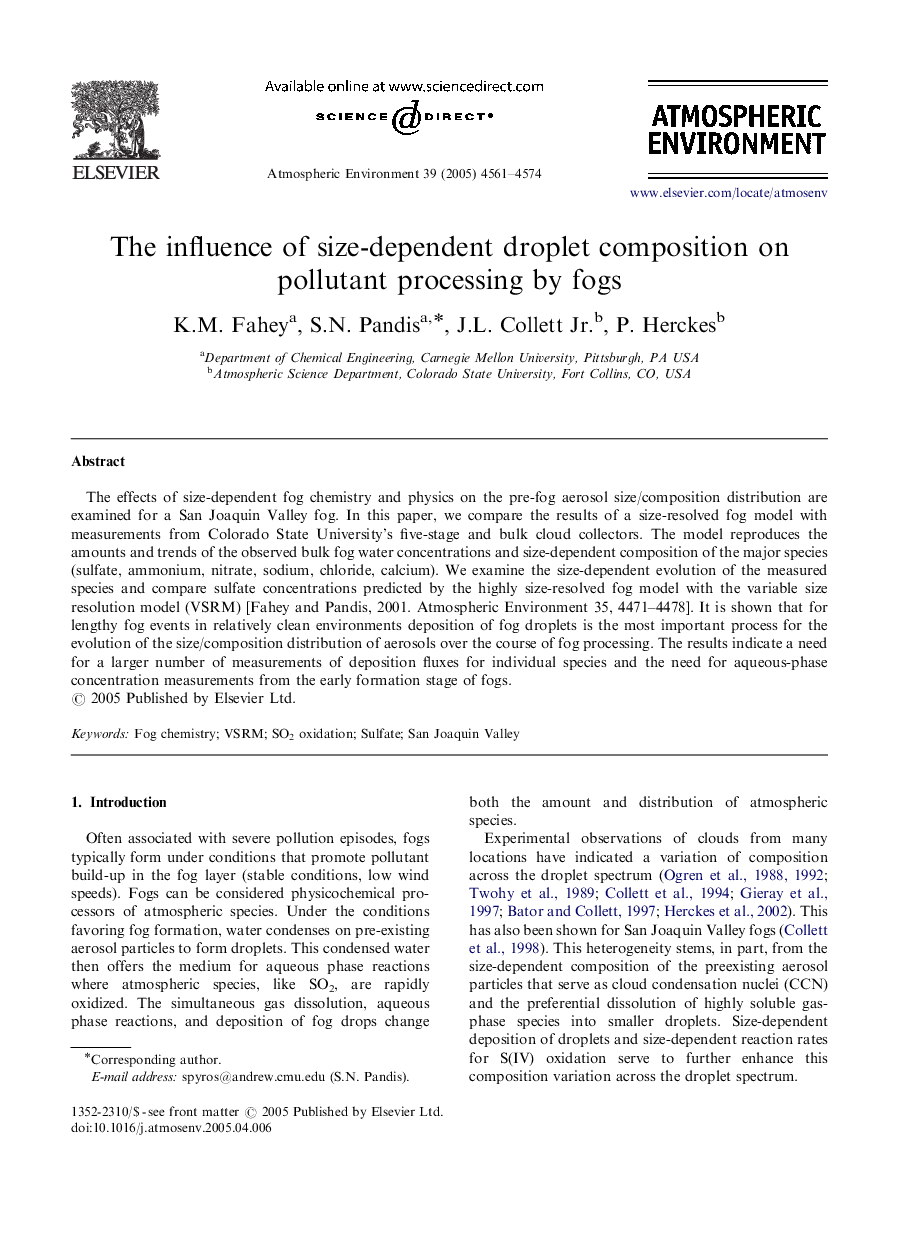| Article ID | Journal | Published Year | Pages | File Type |
|---|---|---|---|---|
| 4445228 | Atmospheric Environment | 2005 | 14 Pages |
The effects of size-dependent fog chemistry and physics on the pre-fog aerosol size/composition distribution are examined for a San Joaquin Valley fog. In this paper, we compare the results of a size-resolved fog model with measurements from Colorado State University's five-stage and bulk cloud collectors. The model reproduces the amounts and trends of the observed bulk fog water concentrations and size-dependent composition of the major species (sulfate, ammonium, nitrate, sodium, chloride, calcium). We examine the size-dependent evolution of the measured species and compare sulfate concentrations predicted by the highly size-resolved fog model with the variable size resolution model (VSRM) [Fahey and Pandis, 2001. Atmospheric Environment 35, 4471–4478]. It is shown that for lengthy fog events in relatively clean environments deposition of fog droplets is the most important process for the evolution of the size/composition distribution of aerosols over the course of fog processing. The results indicate a need for a larger number of measurements of deposition fluxes for individual species and the need for aqueous-phase concentration measurements from the early formation stage of fogs.
